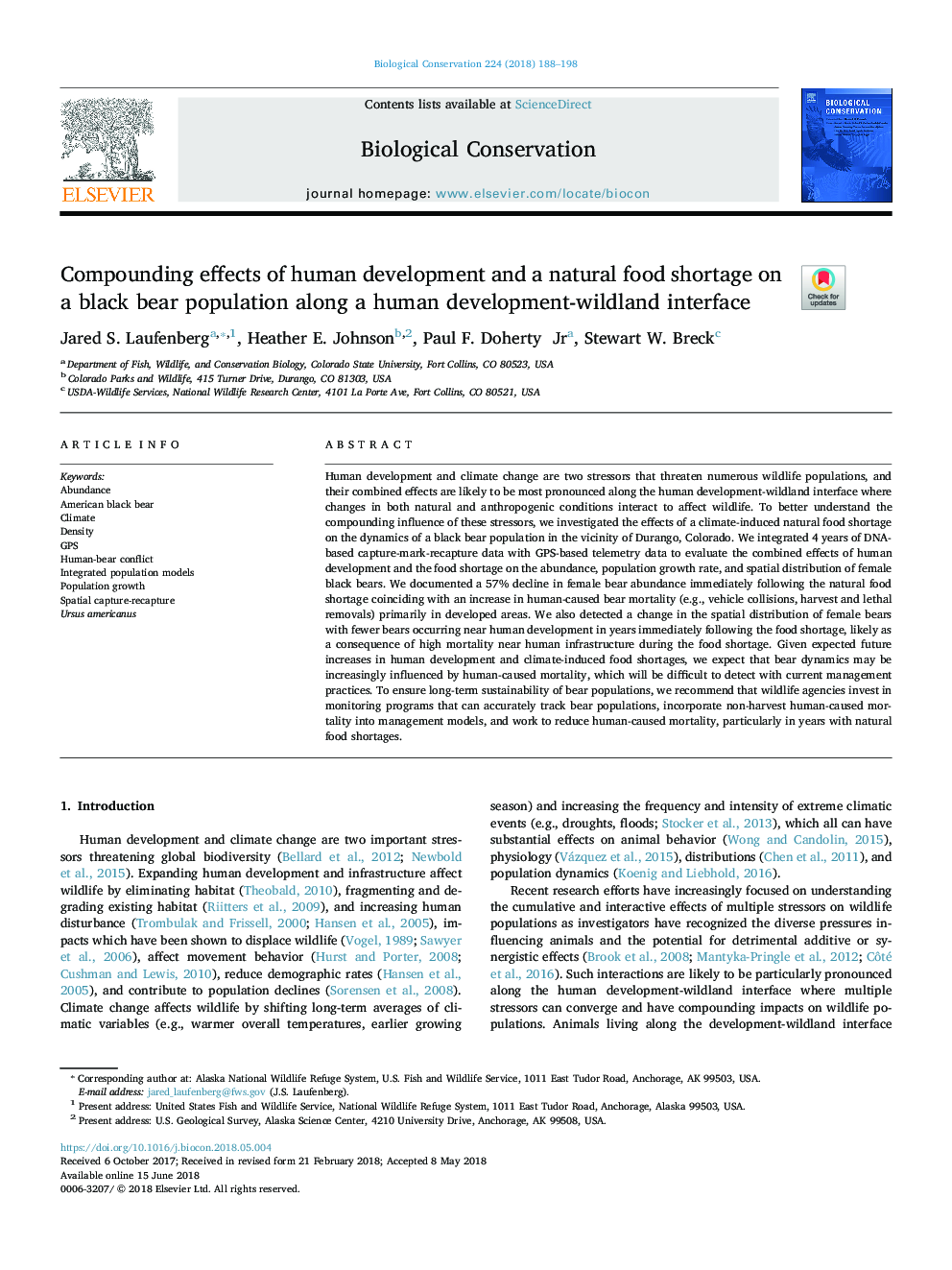| Article ID | Journal | Published Year | Pages | File Type |
|---|---|---|---|---|
| 8847196 | Biological Conservation | 2018 | 11 Pages |
Abstract
Human development and climate change are two stressors that threaten numerous wildlife populations, and their combined effects are likely to be most pronounced along the human development-wildland interface where changes in both natural and anthropogenic conditions interact to affect wildlife. To better understand the compounding influence of these stressors, we investigated the effects of a climate-induced natural food shortage on the dynamics of a black bear population in the vicinity of Durango, Colorado. We integrated 4â¯years of DNA-based capture-mark-recapture data with GPS-based telemetry data to evaluate the combined effects of human development and the food shortage on the abundance, population growth rate, and spatial distribution of female black bears. We documented a 57% decline in female bear abundance immediately following the natural food shortage coinciding with an increase in human-caused bear mortality (e.g., vehicle collisions, harvest and lethal removals) primarily in developed areas. We also detected a change in the spatial distribution of female bears with fewer bears occurring near human development in years immediately following the food shortage, likely as a consequence of high mortality near human infrastructure during the food shortage. Given expected future increases in human development and climate-induced food shortages, we expect that bear dynamics may be increasingly influenced by human-caused mortality, which will be difficult to detect with current management practices. To ensure long-term sustainability of bear populations, we recommend that wildlife agencies invest in monitoring programs that can accurately track bear populations, incorporate non-harvest human-caused mortality into management models, and work to reduce human-caused mortality, particularly in years with natural food shortages.
Keywords
Related Topics
Life Sciences
Agricultural and Biological Sciences
Ecology, Evolution, Behavior and Systematics
Authors
Jared S. Laufenberg, Heather E. Johnson, Paul F. Jr, Stewart W. Breck,
